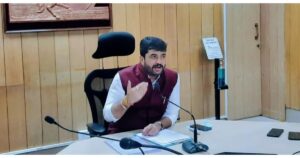Advocating for a Mobile-Free Learning Environment: Restricting Mobile Phone Usage in Schools

Representational pic
The UK authorities have decided to ban the use of mobile phones across all schools in a bid to improve students’ behaviour and attention. In an effort to promote a focused and conducive learning environment, comprehensive guidelines have been unveiled to restrict the use of mobile phones in schools.
The rationale behind these guidelines is rooted in the recognition of the potential adverse impact of mobile phones on both students and staff.
In India as well this announcement will support parents and educators, helping give the next generation the best chance to realise their potential.
Here we look at the key principles of this policy revolve around discouraging mobile phone usage during school hours for various stakeholders:
1. Student-Focused Measures:
– Prohibition of mobile phones during lessons or formal school hours to minimize distractions and enhance concentration.
– Requirement for students to switch off or set their phones to silent mode at all times to ensure an uninterrupted learning experience.
– Designation of specific areas, such as changing rooms and toilets, as mobile-free zones to maintain privacy and discourage misuse.
2. Staff Guidelines for Professional Conduct:
– Prohibition on staff engaging in social networking activities on personal mobile phones during official working hours to prioritize professionalism.
– Limited use of personal phones for contacting students or their families in professional capacities, except in emergencies, ensuring focused communication channels.
– Encouragement for staff to utilize school-issued phones for official communications, fostering a unified and controlled environment.
3. Minimizing Disruptions and Maintaining Professionalism:
– Discouragement of staff using personal phones for personal calls, texts, tweets, etc., during working hours to set a positive example for students.
– Acknowledgment that personal phone usage can disrupt lessons, interrupt meetings, and misuse school time, impacting students’ learning adversely.
Guidelines for Recording and Photography:
– Emphasis on using school equipment like cameras and iPads for legitimate recordings and photographs to maintain consistency and adhere to professional standards.
– Requirement for staff to keep phones on silent or switched off during class time, ensuring an environment free from distractions.
Recognition of Mobile Phones’ Impact on Educational Development:
– Acknowledgment of the potential negative effects of mobile phones on a child’s social and educational development.
– Encouragement for a consistent, school-wide approach to prioritize the well-being of students and create an optimal learning environment.
– Highlighting success stories from schools implementing phone-free environments and strategies, including lockers with charging points.
In summary, these guidelines advocate for a mobile-free learning environment, highlighting the need to minimize disruptions, maintain professionalism, and prioritize the educational development of students.
The principles aim to provide a unified approach for schools, parents, and educators, ensuring a safe and focused learning atmosphere that nurtures optimal learning and development for the next generation.










